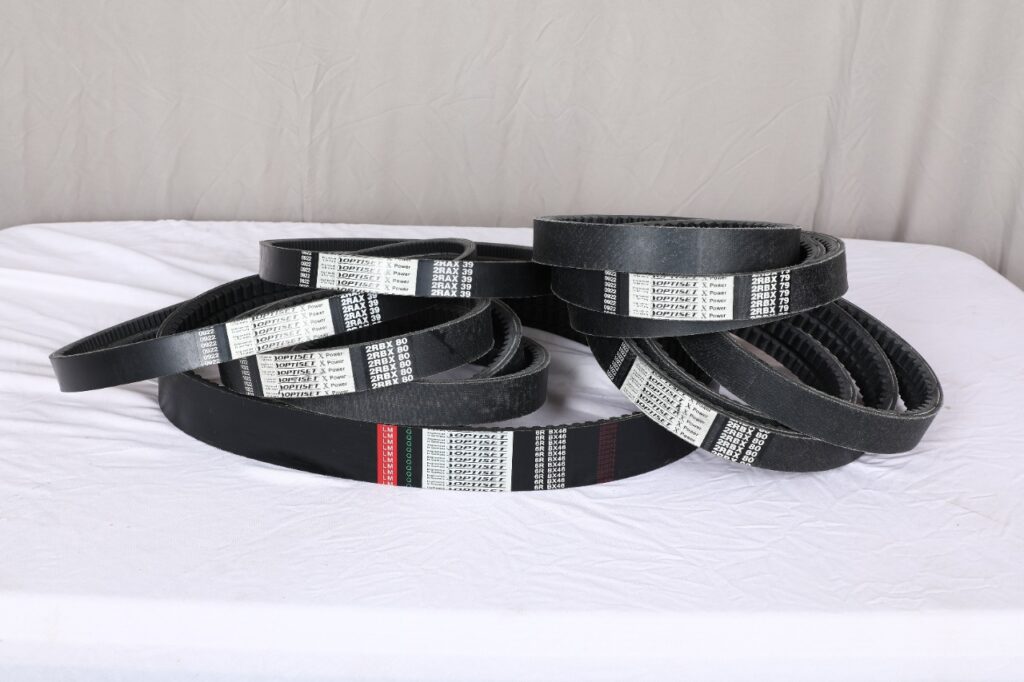Industrial belts are like silent workhorses behind the scenes in every manufacturing plant. They power machines and convey materials ensuring that everything runs smoothly. Nevertheless, with numerous choices at one’s disposal, remembering the right belt looks like moving through a maze.Let our comprehensive guide be a compass that will lead you to the world of industrial belts, showing the most common types, their applications, and important factors to consider while choosing the one that perfectly suits your needs.
The Power Players: High-performance Belts for Transmission
- Flat Belts: These belts are flexible working horses that offer leather, rubber, or fabric. They are great at transmitting high-speed power through long distances- they are most suitable for textile machinery printing press and agricultural (combine harvesters). Not the most powerful ones but quiet and smooth.
- V-Belts: V-belts, known for their unique wedged form, can be considered the bodybuilders of the power transmission industry. They have deeper roots in the pulley grooves than flat models, which makes them operate safely at much higher unit pressure levels. As most likely, in large trucks or earth-moving machines, the drive from the engine to the wheel is cited by V-belts. The total cost estimate of the international market for this sector is expected to be $5.2bn. Soon.
- Timing Belts: Precision is paramount when it comes to timing belts. These belts boast a unique design with teeth that mesh flawlessly with pulleys, ensuring precise movement between shafts, as highlighted on the Jigna Sales website. They’re the silent conductors in car engines, controlling the vital interplay between pistons and camshafts. Timing belts are also crucial components in CNC machines, allowing for incredibly accurate and controlled movements of the cutting tool.
- Poly-Belts: Jigna Sales also offers Poly-belts, a type of flat belt constructed with multiple ribs of high-strength polymers. These belts combine the flexibility of flat belts with the power transmission capabilities of V-belts, making them a versatile choice for applications requiring both characteristics.
The Material Movers: Belts Designed to Deliver
- Flat Belt Conveyors: Imagine a never-ending loop of sturdy belting transporting everything from groceries in a supermarket to massive car parts in an assembly line. That’s the magic of flat belt conveyors. They’re incredibly adaptable, with belts made from various materials to suit specific needs, as mentioned on the Jigna Sales website. From food-grade rubber for delicate produce to heat-resistant materials for handling hot components, flat belt conveyors keep the flow of materials consistent.
- Cleated Conveyor Belts: Not all journeys are smooth sailing. When you need to transport goods up inclines or handle uneven loads, cleated conveyor belts come to the rescue. These belts feature strategically placed raised attachments that prevent items from slipping or rolling during transport, just like the ones Jigna Sales offers. Imagine a warehouse conveyor carrying boxes filled with books up a steep incline – the cleated design ensures the boxes reach their destination safely and securely.
- Modular Plastic Belt Conveyors: For applications demanding the utmost cleanliness and corrosion resistance, modular plastic belt conveyors offer a unique solution. These innovative conveyors, available at Jigna Sales, are constructed from interlocking plastic tiles, creating a smooth, easy-to-clean surface. They’re perfect for industries like food processing, pharmaceuticals, and beverage production, where hygiene is paramount.
Choosing the Right Belt: A Match Made in Industrial Heaven
Now that you’ve explored the diverse landscape of industrial belts, here are some key considerations to ensure you select the perfect one for your application:
- Powerhouse or Mover? Identify your primary objective. Are you looking for a belt to transmit power between shafts (think V-belts in an engine) or for one to efficiently move materials (like a flat belt conveyor)?
- Weighty Matters: Consider the weight (or load capacity) the belt will need to handle. Don’t overload your belt, or you’ll face premature wear and tear. Imagine a conveyor belt struggling under the weight of heavy machinery – it’s a recipe for disaster.
- Need for Speed? Match the belt’s speed capabilities to your application’s demands. High-speed printing presses require belts that can handle the rapid movement.
By understanding the different types of belts available and the factors to consider when choosing one, you can empower yourself to select the perfect partner for your specific needs. Remember, the right belt will become an invisible hero, ensuring your machinery runs smoothly and efficiently for years to come.



